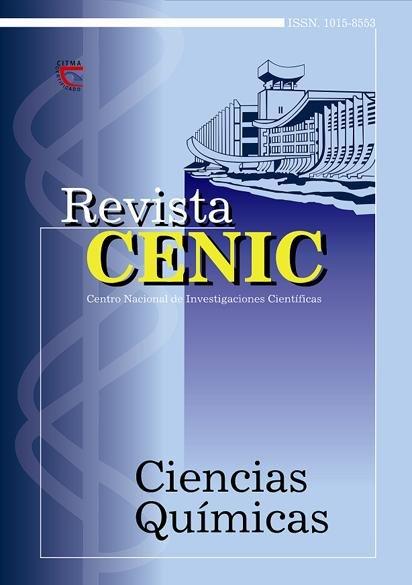Matrix effect during element determination trace in the Ca-Mg-Na system by Spectroscopy Atomic Emission with Inductively Coupled Plasma
Abstract
Inductively Coupled Plasma Atomic Emission Spectroscopy (ICPAES) occupies an outstanding place among the techniques that are used for the analysis of environmental samples. In particular, it constitutes an established technique for analysis of natural waters. In this case, some advantages should be considered, for example: easy introduction in the plasma, minimal treatment of samples not requiring a previous concentration process for many analytes and different analysis purposes, determination of major and trace elements due to the wide linear concentration intervals of the calibration curves, as well as low detection limits and appropriate precision. However, in some kind of waters, the variability between samples and relative high concentration of major elements Ca, Mg and Na introduce systematic errors in the ICP-AES analysis. In this work. A study of the influence of the Ca, Mg and Na (0 to 2 000 mg · L-1) and their possible combinations on the analytical intensity signal of 10 analytes (Li, Cu, Zn, Ba, Fe, Cr, Co, Ni, Cd and Pb) with a variable total potential excitation in the 1,85 - 14,79 eV interval was carried out. The calcium and magnesium matrix effect increased with the total potential excitation of elements, while these effects decreased for sodium matrix. The application of 2n factorial designs allowed appropriate description and diagnosis of the effect; as well as the implementation of a correction procedure, which improved the accuracy of the results until one order of magnitude depending on the determined element.

Downloads
Published
How to Cite
Issue
Section
License
Copyright (c) 2001 Copyright (c) 2001 Revista CENIC Ciencias Químicas

This work is licensed under a Creative Commons Attribution-NonCommercial-ShareAlike 4.0 International License.
Los autores que publican en esta revista están de acuerdo con los siguientes términos:
Los autores conservan los derechos de autor y garantizan a la revista el derecho de ser la primera publicación del trabajo al igual que licenciado bajo una Creative Commons Atribución-NoComercial-CompartirIgual 4.0 que permite a otros compartir el trabajo con un reconocimiento de la autoría del trabajo y la publicación inicial en esta revista.
Los autores pueden establecer por separado acuerdos adicionales para la distribución no exclusiva de la versión de la obra publicada en la revista (por ejemplo, situarlo en un repositorio institucional o publicarlo en un libro), con un reconocimiento de su publicación inicial en esta revista.
Se permite y se anima a los autores a difundir sus trabajos electrónicamente (por ejemplo, en repositorios institucionales o en su propio sitio web) antes y durante el proceso de envío, ya que puede dar lugar a intercambios productivos, así como a una citación más temprana y mayor de los trabajos publicados (Véase The Effect of Open Access) (en inglés).













